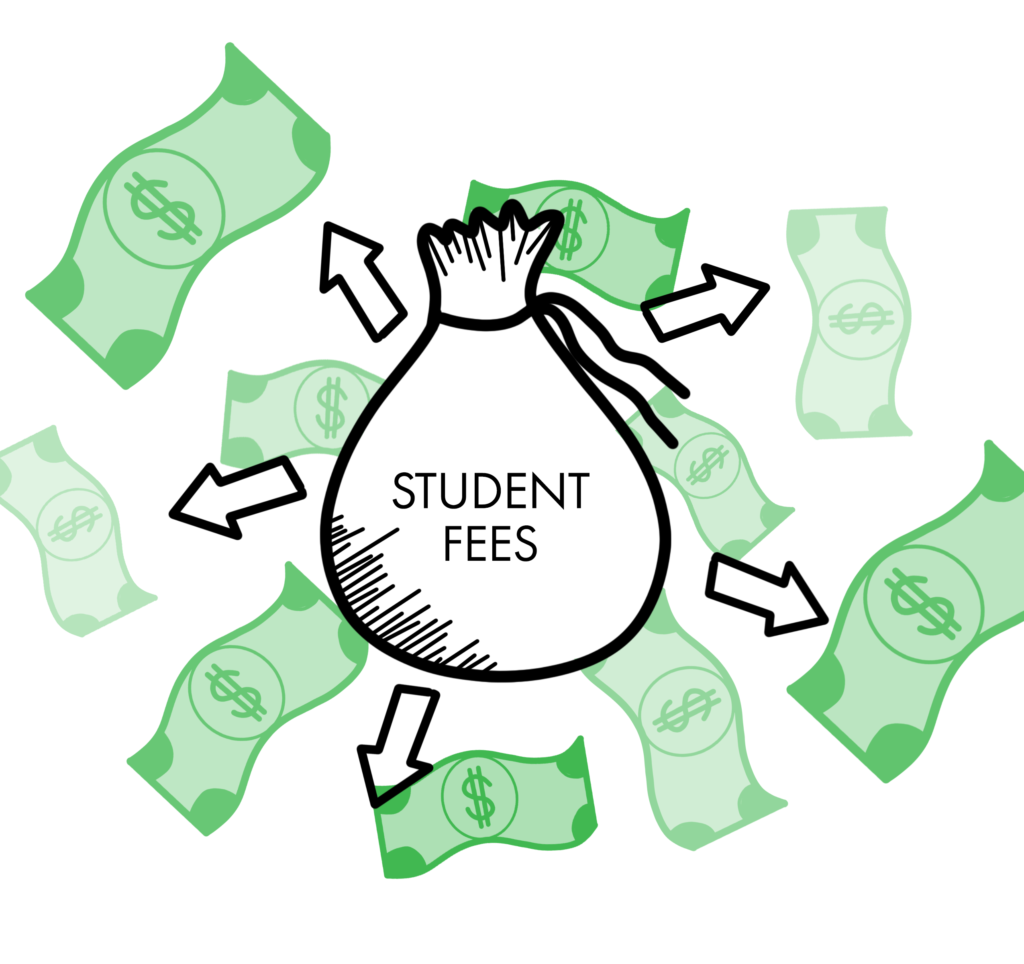
Three presentations allowed students to decide if their student fees should be raised
With tuition due at the end of this month, one charge that every student finds is the student fee. This includes fees that go towards technology, the library, Connect ND and other areas.
When it comes to evaluating the amount students pay for these fees, the Student Fee Advisory Board (SFAB) helps to break down where the money goes and considers proposals to increase them.
“The first thing that I did was starting in the fall I met with all of the heads of the areas that receive fees,” Student Body President and Chair of the SFAB Matthew Friedmann said. “We looked over where their fees were going to and making sure they’re utilizing them properly.”
Friedmann said that with Covid-19, he also wanted to make sure that the students were still getting value from their student fees as he heard concerns from students. “I was very pleased to find that they were remaining true in their mission to be benefiting the students.”
The SFAB consists of the heads of the fee receiving entities and students who are appointed by Friedmann and the Student Senate along with three students who aren’t part of Student Government.
This year Friedmann appointed two graduate students who he said can be “overlooked” when it comes to getting their perspective and one undergraduate student to the board. “These were people who were not a part of Student Government and I thought brought a good perspective,” Friedmann said.
Once the board meets, any fee receiving entity that wants to request an increase in student fees can submit a request. Feedback is then collected from students, the board evaluates the proposals as a committee and then the board votes on the request.
Friedmann explained that the SFAB is a “recommendation body” to President Dean Bresciani who is the one who gets to make the final decision about student fees.
When it comes to proposing an increase in student fees to the student body, presentations are created by the areas that are requesting an increase. This year three areas on campus gave a presentation proposing an increase including the library, technology and a new inflation adjustment funding model.
When looking at how student library fees are being spent, 93% of these fees goes towards annual subscriptions, 6% goes towards books and 1% goes to institutional fees. The presentation explained how a fee increase would continue to ensure students have access to online resources, increase hourly wage for student employees and expand the Digital Fabrication Lab and Virtual Reality Labs.
The current tech fee students pay is $10.12 per credit with the IT Division proposing to increase the fee to $12.45 per credit. Tech fees fund classroom technology equipment, computer labs, software associated with classrooms and labs, staff to help support classrooms and labs and Hyflex equipment.
The last presentation focused on a new inflation adjustment funding model which would be a new way to manage student fees. The only three fees that aren’t applicable for yearly inflation adjustment include the Union Bond Fee of $3.85 per credit, the Connect ND Fee of $5.50 per credit and the NDSA Fee of $0.04 per credit.
When it comes to the pros of the new inflation adjustment funding model, it will save money in the long run while there is financial predictability, though a drawback mentioned in the presentation is that it will ultimately raise fees.
All three presentations were held and recorded on Zoom where students could ask questions. Once students got to listen to each presentation they were then provided a feedback survey.
